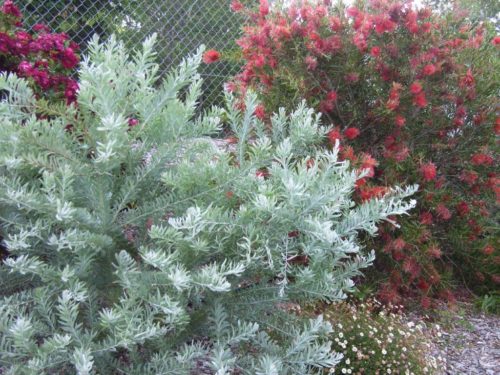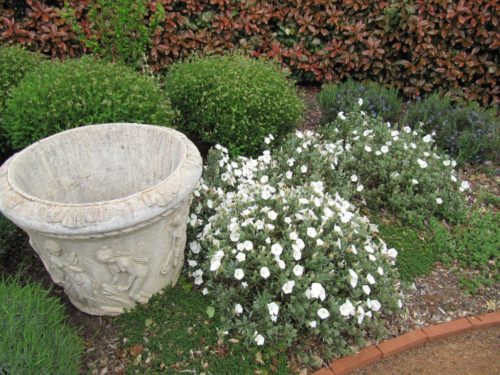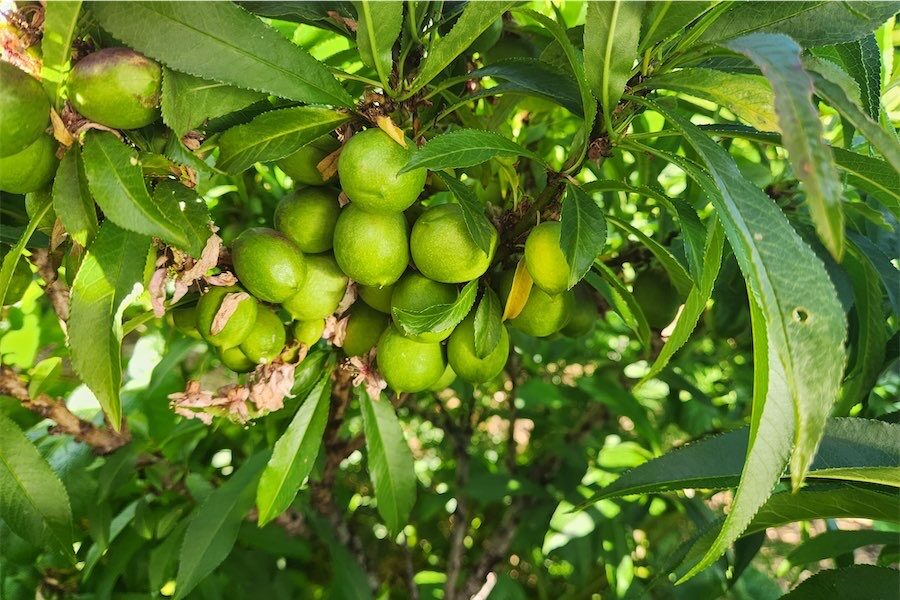
Silvery-grey foliage and white flowers don’t have to be boring, says gardening writer CEDRIC BRYANT.
GREY and white foliage or flowers can play an important part in the garden as a stunning contrast to bold colours.
A completely white garden is beautiful too, from roses to other white-flowered shrubs, combined with perennials for year-round interest.

White flowers and silver or grey foliage can provide one of nature’s loveliest combinations. There are a huge range of silver or grey-leaved plants available, such as lavender with its tiny grey leaves and bright purple flowers, and dianthus, known as “pinks”. This is a huge family, with tiny, silvery-grey leaves and a profusion of flowers, generally from the hotspots of the world, like Greece, Crete, South and North Africa. Plant Growers Australia, the largest wholesale growers of perennials in the country, list 20 varieties of dianthus available at most nurseries.
One of my favourite plants, with a combination of grey leaves and white flowers over a long period is silverbush, or Convolvulus cneorum, pictured here in our front garden, but also ideal for growing in a container or hanging garden. It originates in the heat of North Africa. The Teucrium family is from a similar area, with the popular T. fruticans, or germander, which have tiny glaucus leaves and a mass of lilac or blue flowers. Growing to about 1.5m, this can make a fast-growing, attractive hedge. Be prepared to trim it very regularly or train it for topiary. Ours is trimmed into a large ball.

All these small, grey-leaved plants are perfect for our climate, particularly the heat and drought times. In general terms, the smaller the leaf the hotter the climate of its origin.
One plant that has lost some of its popularity is lamb’s ear, or Stachys lanata. The old name S. byzantina gives the clue to its origin in Turkey. This one goes against the grain with its fluffy grey leaves, setting off its pink or purple flowers perfectly. Despite the size of the leaves, it’s very drought tolerant.
I just love plant names that seem perfectly appropriate, like Helichrysum Hi Ho Silver and Icicles, describing the grey leaves. These Aussie plants, known as everlasting daisies, have now been reclassified as Xerochrysum. Our “everlasting” flowers are popular in Scandinavian countries for providing colour in homes during the long snowbound winters.
A groundcover that will never go out of fashion is snow-in-summer, or Cerastium tomentosum. My 1939 edition of “Hortus Third”, a very large tome listing every known plant growing in America and Canada, lists an amazing 21 varieties of cerastium. One of its popular uses is in rock walls. It’s so easy to grow and can be propagated by seed, cuttings or division. Its mass of tiny white flowers are perfectly set off against the grey leaves, originating from the mountains of northern Italy right down to Sicily.
Who can be trusted?
In a world of spin and confusion, there’s never been a more important time to support independent journalism in Canberra.
If you trust our work online and want to enforce the power of independent voices, I invite you to make a small contribution.
Every dollar of support is invested back into our journalism to help keep citynews.com.au strong and free.
Thank you,
Ian Meikle, editor




Leave a Reply